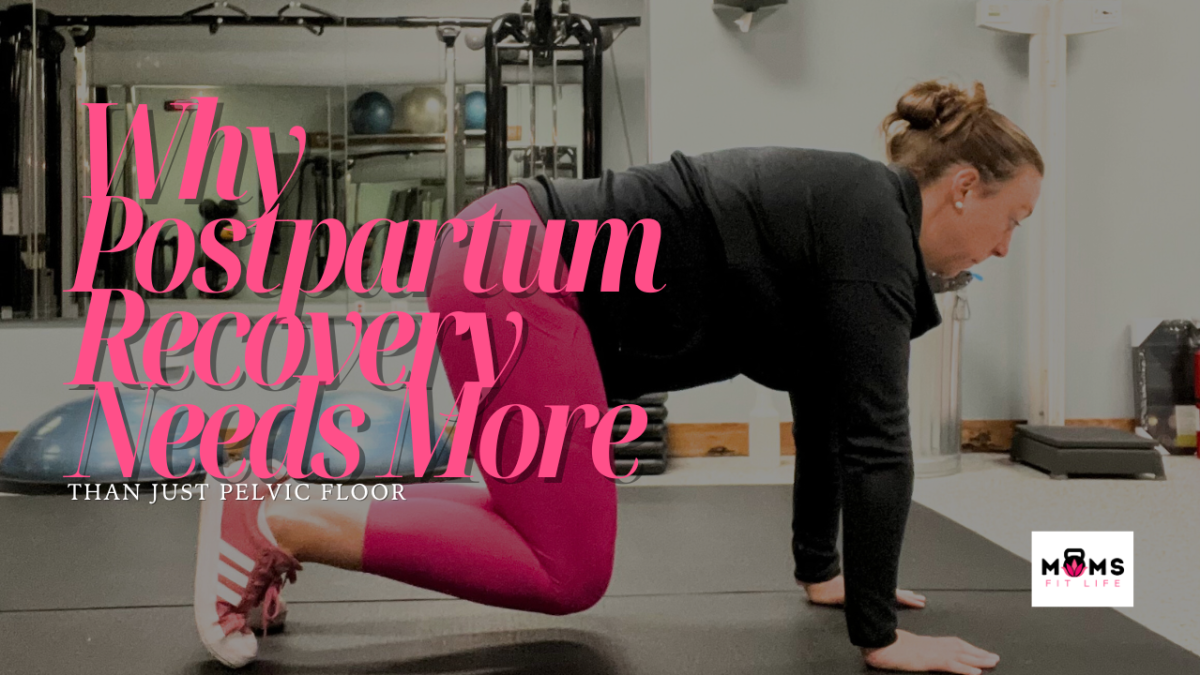Why Postpartum Recovery Needs More Than Just Pelvic Floor

Postpartum care isn’t just about your pelvic floor—real recovery needs a full-body, movement-based approach that supports how moms live.
If you’ve ever walked into a pelvic floor PT session, laid on your back, did a few breathing exercises, and thought “This can’t be it…”—you’re not alone.
Here’s the truth: If your care only looks at your pelvic floor in isolation, and only while you're lying down, it’s missing the bigger picture. Especially if you're someone who wants to get back to running, lifting, chasing toddlers, or doing anything that requires real-life movement.
Your body doesn’t function lying flat on a table all day. You move, twist, pick up car seats, unload groceries, hike a hip to hold a baby on one side and stretch your opposite arm to pour a cup of coffee… right? So if we want to really fix leaking, pain, or heaviness, your postpartum care has to look at how your whole body is moving and supporting you—not just what your pelvic floor is doing in a passive position.
A Full-Body Approach = Real Recovery
Let’s talk about what that actually means.
✅ Standing, Moving, and Load-Bearing Assessment:
You should be evaluated in the positions you live your life in. That means your pelvic floor should be looked at while you’re moving, not just resting. Can it handle pressure when you squat, lunge, or carry? Is it coordinating with your breath, your core, and your glutes when you move?

✅ Shoulder and Ribcage Function Matter More Than You Think:
Your rib cage is your pressure system. If it's stiff, flared, or misaligned from pregnancy and nursing posture, your pelvic floor will pick up the slack—or fail trying. Shoulder mobility also plays a huge role in helping your core and back stabilize properly, especially when you’re carrying a baby (or a car seat!) all day.
✅ Feet, Hips, and Everything In Between:
Strong, mobile feet are your foundation. If your arches are collapsed or your foot mechanics are off, your whole posture shifts—affecting your knees, hips, pelvis, and yes, your core. Pregnancy changes your center of gravity, often flattening feet and tightening calves. That doesn’t just bounce back on its own.

It's All Connected—Because It Has to Be
Your body adapts during pregnancy in incredible ways. But those changes can also lead to head-forward posture, stiff ribs, compressed breathing patterns, weak glutes, poor core engagement… the list goes on. That’s why we can’t just zoom in on one spot and expect everything to fix itself.
Think of it this way:
If your pelvic floor is leaking when you deadlift, maybe it’s not about the pelvic floor being "too weak." Maybe your ribs are stuck, your foot isn’t grounded, or your glutes aren’t firing. That’s why a solid postpartum recovery plan looks at the whole chain.
What You Actually Need from Your Postpartum Fitness and Rehab Plan
You need someone who will…
- Watch how you move in standing, walking, squatting, lifting.
- Help you reconnect the entire system—from your jaw and diaphragm down to your feet.
- Get you out of the rehab table and back into real movement patterns that reflect your actual life.
You deserve more than just a checklist of “core and pelvic floor.” You deserve a plan that helps you feel strong, confident, and ready for all the things motherhood throws your way—without pain or second guessing every movement.
Want to work with someone who looks at the full picture? My 1:1 training is all about helping active moms like you rebuild from the ground up—literally. Let’s get you back to doing what you love, with a body that supports you.
📩 Message me now for 1:1 coaching.
Categories: : fourth trimester, healing after birth, Pelvic Floor, Postpartum, postpartum recovery
 Jen Landry
Jen Landry 